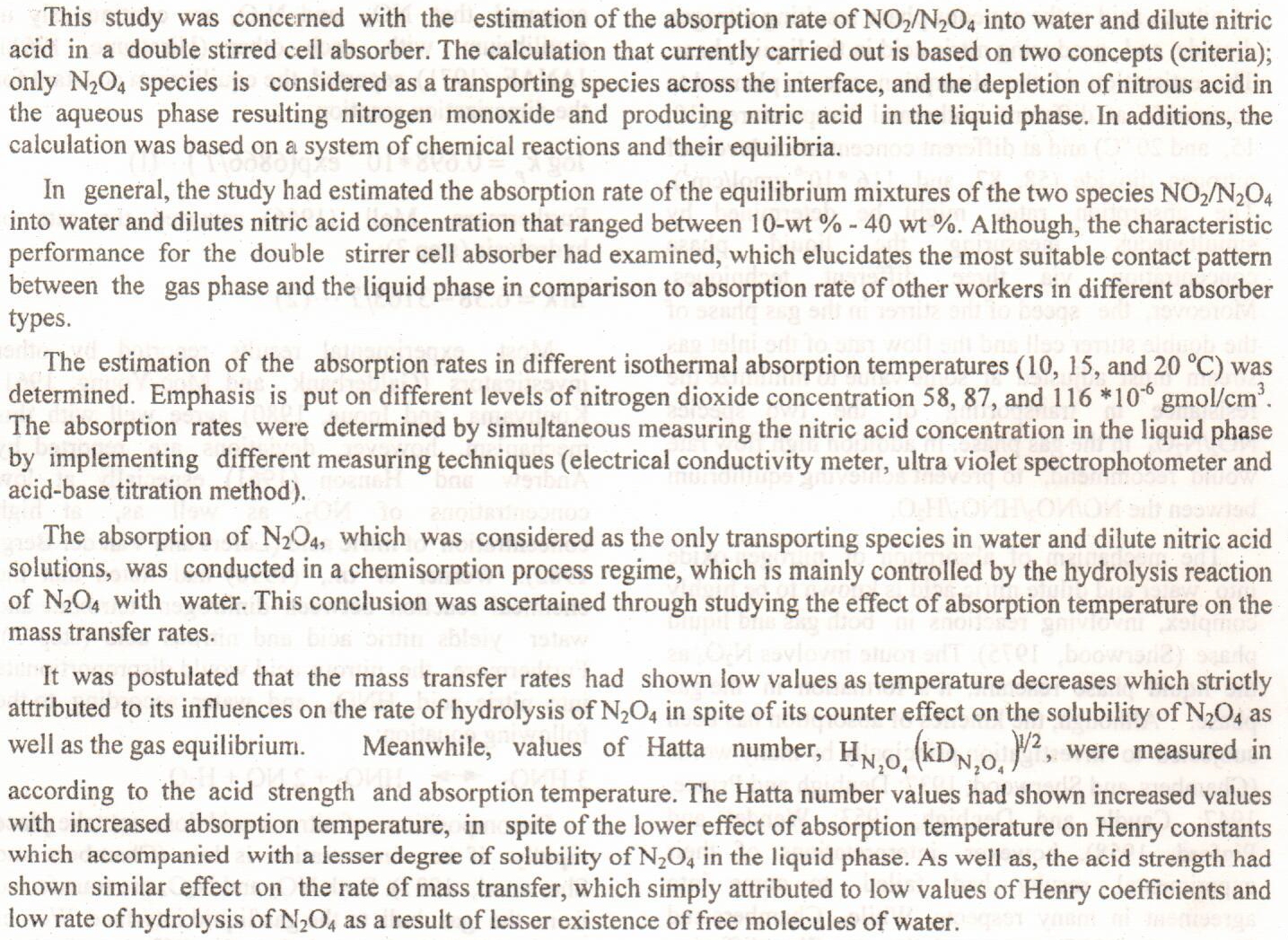
Biodegradation is utilizing microorganisms to degrade materials into products that are safe for the
environment, such as carbon dioxide, water, and biomass. The current study aims to isolate and characterize
bacteria with polyethylene terephthalate (PET) degradation ability isolated from Shatt al-Arab water and
sewage from Basra, the bacteria were identified as Klebsiella pneumonia. According to the findings, the
isolates showed a highly significant difference in degradation of PET (24% during 7 days) and the percent of
degradation increased to 46% at 4 weeks compared to the control. The study also involved determining the
optimum temperature of K. pneumonia growth, which was 37°C, while the preferred
 (3)
(3)
The agricultural lands that depend on supplementary irrigation methods for winter wheat cultivating in wide areas of the Nineveh province are most vulnerable to climate change concerns. Due to frequent rainfall shortages and the temperature increase recently noticed and predicted by the climate scenarios. Hence important to assess the climate effect on the crop response in terms of water consumption during the periods (2021-2040) and (2041-2060) by using high-resolution data extracted from 6 global climate data GCMs under SSP5-8.5 fossil fuel emission scenarios in changing and fixed CO2 concentration. And validate the Aqua-Crop model to estimate the yield and water productivity. And gives the RRSME of 7.1- 4.1
... Show More (3)
(3)
 (2)
(2)
This work has been done with using of epoxy resin mixed with Granite powder were weighted by percent volume (5,10,15, and 20)%and then mixed with epoxy polymer to compose polymer composite. Hand lay-up technique is used in fabrication of the composite samples. Hardness test was carried out for the proper samples in both normal condition and after immersion in HCL (1 M and 2 M) solutions for periods ranging up to 10 weeks. After comparing the results between the polymer and their composite, the hardness increased with increasing Granite weight percent, it was found that Hardness were greater for the composites before immersion compared with their values after immersion.
In the present work, a kinetic study was performed to the extraction of phosphate from Iraqi Akashat phosphate ore using organic acid. Leaching was studied using lactic acid for the separation of calcareous materials (mainly calcite). Reaction conditions were 2% by weight acid concentration and 5ml/gm of acid volume to ore weight ratio. Reaction time was taken in the range 2 to 30 minutes (step 2 minutes) to determine the reaction rate constant k based on the change in calcite concentration. To determine value of activation energy when reaction temperature is varied from 25 to 65 , another investigation was accomplished. Through the kinetic data, it was found that selective leaching was controlled by
... Show More (1)
(1)
In the present work, a kinetic study was performed to the extraction of phosphate from Iraqi Akashat phosphate ore using organic acid. Leaching was studied using lactic acid for the separation of calcareous materials (mainly calcite). Reaction conditions were 2% by weight acid concentration and 5ml/gm of acid volume to ore weight ratio. Reaction time was taken in the range 2 to 30 minutes (step 2 minutes) to determine the reaction rate constant k based on the change in calcite concentration. To determine value of activation energy when reaction temperature is varied from 25 to 65 , another investigation was accomplished. Through the kinetic data, it was found that selective leaching was controlled by surface chemical reactio
... Show More (1)
(1)
Microbial activity of Ellagic acid when mixed with some types of candy toward Streptococcus mutans microorganism was studied. The main purpose of carrying out this study is to produce a new type of candy that contains Ellagic acid in addition to xylitol instead of sucrose to prevent dental caries. The results show that the inhibitory action of Ellagic acid was more effective when mixed with this type of candy for the purpose of reducing Streptococcus mutans microorganisms, while sensory evaluation was applied in this study to 20 volunteers to that candy sample evaluated which contain (5 mg/ml) Ellagic acid with 100g xylitol to determine consumers acceptability of this sample of candy. The results were expressed as mean value, slandered d
... Show MoreBidentate Schiff base ligand 3-(3,4-Dihydroxy-phenyl)-2-[(4-dimethylamino-benzylidene)-amino]-2-methyl-propionic acid was prepared and characterized by spectroscopic techniques studies and elemental analysis. The Cd(II), Ni(II), Cu(II), Co(II), Cr(III),and Fe(III) of mixed-ligand complexes were structural explicate through Moler conductance , [FT-IR, UV-Vis & AAS], chloride contents, , and magnetic susceptibility measurements. Octahedral geometries have been suggested for all complexes. The Schiff base and its complexes were tested against various bacterial species, two of {gram(G+) and gram(G-)} were shown weak to good activity against all bacteria.
 (3)
(3)
 (7)
(7)
 (3)
(3)
